Overview
The team is dedicated to the evaluation of the benefits of using magnetic devices in Integrated Circuits (ICs). It is expected that integrating non-volatility in ICs could contribute to push forward the incoming limits in the microelectronics scaling. This work includes integrating the magnetic devices in standard design tools, design hybrid circuits and evaluate their performance for various applications. The unique combination of advantages of spintronics devices (non-volatility associated with high speed and endurance, analogue capabilities, well controlled stochastic behavior…) allows intrinsically mixing the memory and logic functionalities (in Memory Computing). This opens the way towards new computing paradigms, beyond the standard Von-Newman architecture of computing systems. The most interesting applications addressed in the team are described below.
Research topics
Hybrid CMOS/Magnetic design flow
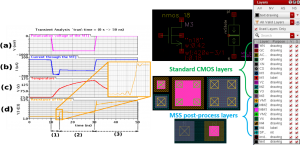
Designing hybrid circuits requires integrating the magnetic devices in the standard design flow of microelectronics. This includes compacts models for electrical simulations, technology files including the magnetic back-end and libraries of Standard Cells for digital design.
Low-power logic circuits
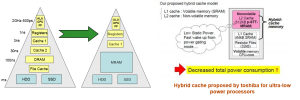
One issue related to microelectronics scaling is the increasing standby power, due to leakage currents. Introducing non-volatility in circuits allows easing the power gating technique, which consists in cutting-off the power supply of inactive blocks to save leakage.
Artificial intelligence
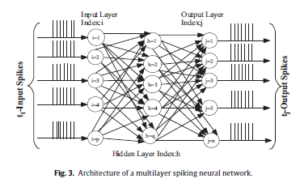
Spiking Neural Networks are seen as a Key building block for strongly improving the energy efficiency of current AI applications and opening up new possibilities (in terms of unsupervised learning, recurrent networks, probabilistic inference, etc.). The scientific challenges to be tackled are the following: the first one is to define power-constrained learning and inference algorithms (online, supervised, unsupervised, probabilistic, etc.). The second one is to design a scalable and flexible SNN architecture, adaptable to the different above-mentioned algorithms, and fabricate that circuit in hybrid nanoscale CMOS and NVM technology, enabling very dense synaptic density. The last objective is to derive a principled toolchain for the algorithm, design, development, and integration of spiking neural networks for future adoption in industrial health and automotive embedded applications.
IC Reliability : Hardware security
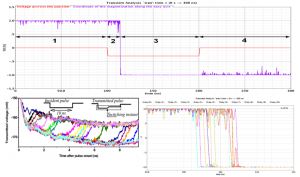
While STT MRAM can be beneficial for hardware security (taking advantage of its stochastic behavior for cryptography for instance), it also presents some specific failures mechanisms that has to be studied to take the appropriate countermeasures.
IC Reliability : Radiation hardening
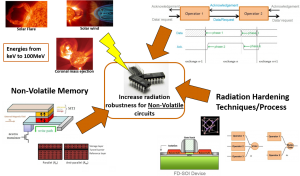
The intrinsic hardness to radiations of the magnetic devices make them a good candidate to be embedded in circuits for space applications. It can be advantageously combined with other hardening technologies or design techniques targeting space applications.
The team
Projects
Present
- SCREAM, ANR (2025-2028) – Secure Processor with MRAM Technology
- SPINFROST, ANR (2023-2026) – Design of ferroelectric spintronic architectures for ultra-low power memories, post-CMOS logic and neuromorphic computing
- QUALMEM, ANR (2023-2026) – Quality Assurance of Advanced and Emerging Memory Technologies by Using Machine Learning
- PEPR-ELEC, ANR (2022-2027) – Programmes et Equipements Prioritaires de Recherche Electronique
Former members
Permanent Staff
- Christophe LAYER : Research scientist
- François DUHEM: Research scientist
Post-docs
- Chadi AL KHATIB (2021-2023)
- Pablo ILHA VAZ (2022-2022)
- Ghislain TAKAM TCHENDJOU (2020-2021)
- Pierre VANHAUWAERT (2014-2017)
- Eldar ZIANBETOV (2014-2017)
- Kotb JABEUR (2013-2017)
- Virgile JAVERLIAC (2013-2014)
- Fabrice BERNARD-GRANGER (2013-2014)
- Yun YANG (2012-2013)
- Abdelilah MEJDOUBI (2010-2012)
PhD
- Yacine MEHADJI (supervised by L. Anghel and G. Prenat) (2024)
- Kamal DANOUCHI (supervised by L. Anghel and G. Prenat) (2021-2024)
- Odilia COI (supervised by G. Di Pendina, D. Dangla and L. Torres) (2018-2021)
- Antoine HERAUD (supervised by L. Anghel and Alexandre Valentian) (2020-2022)
- Etienne BECLE (supervised by L. Anghel , G. Prenat and I.L. Prejbeanu) (2019-2021)
- Mounia KHARBOUCHE (supervised by G. Di Pendina, R. Wacquez and J.M. Portal) (2016-2019)
- Rana ALHALABI (supervised by G. Di Pendina, E. Nowak and L. Prejbeanu) (2016-2019)
- Jeremy LOPES (supervised by G. Di Pendina, E. Beigne, D. Dangla and L. Torres) (2014-2017)
- Erya DENG (supervised by G. Prenat and L. Anghel) (2014-2017)
- Olivier GONCALVES (supervised by G. Prenat and B. Dieny) (2009-2012)
- Wei GUO (supervised by G. Prenat and B. Dieny) (2006 – 2010)
- Mourad El BARAJI (supervised by G. Prenat and B. Dieny) (2007-2009)
Engineers
- Stephane GROS (2013-2014)
- Pierre PAOLI (2013-2014)
Former projects
- CARMEM, 80|PRIME – CNRS (2021-2024) – Modèles de Caractérisation par Apprentissage pour la Qualité des Technologies de Mémoires Émergentes
- NEUSPIN, ANR/DFG (2021-2024), Design of a reliable edge neuromorphic system based on spintronics for Green AI
- MISTRAL, ANR (2019-2024) – MRAM/CMOS Hybridization to secure cryptographic algorithms
- NV-APROC, ANR (2019-2023) – MRAM-based Non-volatile Asynchronous Processor
- SPINBRAIN (2020-2022) – Spintronic-based Neural Network
- HANS, UGA (2019-2022)
- GREAT, H2020 (2016-2019)
- MASTA, ANR (2016-2019)
- ELECSPIN, ANR (2016-2020) – Electric-filed control of spin-based phenomena
- NOVELASIC, CEA-nanosciences (2015)
- MAD, CEA internal (2014-2018)
- SPOT, H2020 (2012-2015)
- MARS, ANR (2012-2015)
- DIPMEM, ANR (2012-2015)
- HYMAGINE, ERC Advanced grant (2010-2015)
Partners
- NanoXplore
- LIRMM
- IM2NP
- TIMA
- University of Montpellier
- KIT
- NanoXplore
- TRAD
- TUD
- University of Brasov
- LETI
- IEF – C2N
- University of Aix-Marseille
- CEA Tech (Gardanne)
- EMSE (Gardanne)
- Greenwaves
- eVaderis
- TowerJazz
- Singulus
- Toplink Innovation
- Tiempo Secure
- Starchip
- CNES
- Dolphin Integration
- SIGFOX
- Antaios
- IHP
- Thales TRT
- University of Newcastle
- EM Marin
Recent news
- Masters thesis projects for Spring 2020 (September 30th, 2019)

You find here the list of proposals for Master-2 internships to take place at Spintec during Spring 2020. In most cases, these internships are intended to be suitable for a longer-term PhD work. Interested Master-1 ... - High-density SOT-MRAM memory array based on a single transistor (September 18th, 2019)

Spin Orbit Torque Magnetic RAM (SOT-MRAM) approach represents a new way to overcome Spin Transfer Torque (STT) memory limitations by separating the reading and the writing paths. It is particularly interesting for high-speed applications that do ... - Light-Weight Cipher Based on Hybrid CMOS/STT-MRAM: Power/Area Analysis (September 04th, 2019)

Internet of Things (IoT) applications deployment relies on low-power and security constraints. In this perspective, lightweight cryptography has been developed. This field enables, with a reduced area and power consumption, to encrypt sensitive data processed in ... - NV-APROC – An ANR project (August 12th, 2019)

NV-APROC stands for Non Volatile MRAM-based Asynchronous PROCessor, a 42-month ANR project starting on October 2019, coordinated by Spintec. Micro and nano electronics integrated circuit domain has been strongly driven by the advent of ... - MISTRAL – An ANR project (August 12th, 2019)

MISTRAL stands for MRAM/CMOS Hybridization to Secure Cryptographic Algorithms, an 42-month ANR project starting on October 2019, coordinated by EMSE (Ecole des Mines de St Etienne in Gardanne). MISTRAL is addressing the security of the cryptography ...











